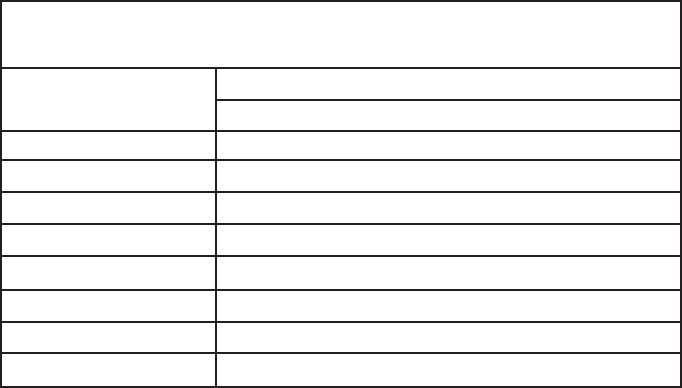
The condensing unit rating plate and the tables of "Physical and Electrical Specifications / Outdoor
Units" (Table 1 and 2) provide pertinent data necessary for the selection of proper size electrical service
and over-current protection devices.
Table 4 provides data on the minimum copper wire size as a function of supply wire length and circuit
ampacity.
Copper Wire Size - AWG
(1% Voltage Drop)
Supply Circuit Supply Wire Length - Ft
Ampacity 50 100 150 200
15 14 10 8 6
20 12 8 6 4
25 10 8 6 4
30 10 6 4 4
35 8 6 4 3
40 8 6 4 2
45 6 4 3 2
50 6 4 3 1
Table 4: Minimum Wire Size Based on N.E.C. for 60 C Type Copper Conductors Below 100
Ampacity.
The owner should be made familiar with the location of the over-current protection, the proper size
for this application and the proper procedure for disconnecting power service to the unit.
The condensing unit control wiring requires a 24 Volt minimum, 25 VA service from the indoor
transformer as shown on the wiring diagram.
7.SYSTEM STARTUP
1.Turn thermostat to "OFF", turn on power supply at disconnect switch.
2.Turn temperature setting as high as it will go.
3.Turn fan switch to "ON". Indoor blower should run. Be sure it is running in the right direction.
4.Turn fan switch to "AUTO". Turn system switch to "COOL" and turn temperature setting below
room temperature. Unit should run in cooling mode.
5.Check to see if compressor and outdoor fan are running correctly?
6.Check the refrigerant charge (see Instructions under "Charging the System").
7.Replace service port caps. Service port cores are for system access only and will leak if not tightly
capped.
8.Check unit for tubing and sheet metal rattles.
9.Instruct the owner on operation and maintenance.
Leave this "Installation and Operating Manual" and the "Use and Care Manual" with owner.
9


















